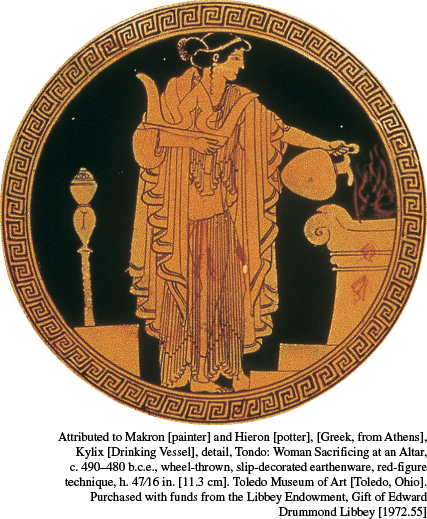
A Greek Woman at an Altar
This red-figure vase painting (contrast the black-figure vase) from the center of a large drinking cup shows a woman in rich clothing pouring a libation to the gods onto a flaming altar. In her other arm, she carries a religious object that has not been securely identified. This scene illustrates the most important and frequent role of women in Greek public life: participating in religious ceremonies, both at home and in community festivals. Greek women (and men) commonly wore sandals; why do you think they are usually depicted without shoes in vase paintings? (Attributed to Makron [painter] and Hieron [potter], [Greek, from Athens], Kylix [Drinking Vessel], detail, Tondo: Woman Sacrificing at an Altar, c. 490–480 B.C.E., wheel-thrown, slip-decorated earthenware, red-figure technique, h. 47⁄16 in. [11.3 cm]. Toledo Museum of Art [Toledo, Ohio]. Purchased with funds from the Libbey Endowment, Gift of Edward Drummond Libbey [1972.55].)